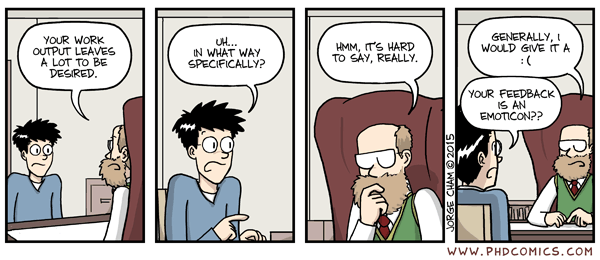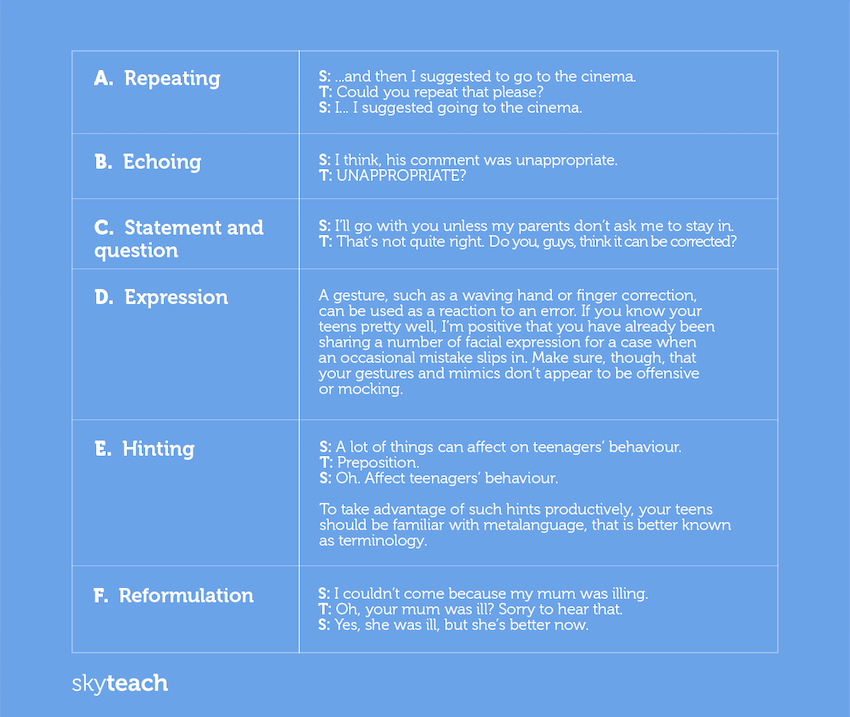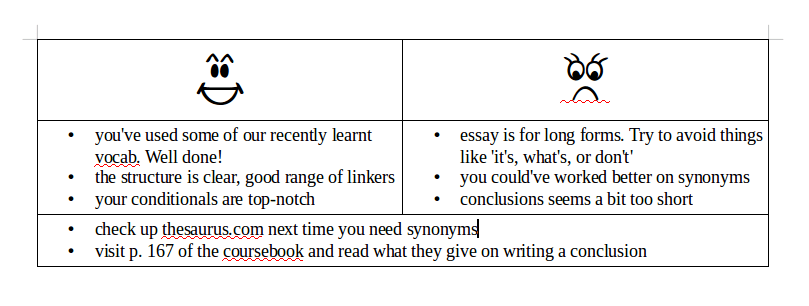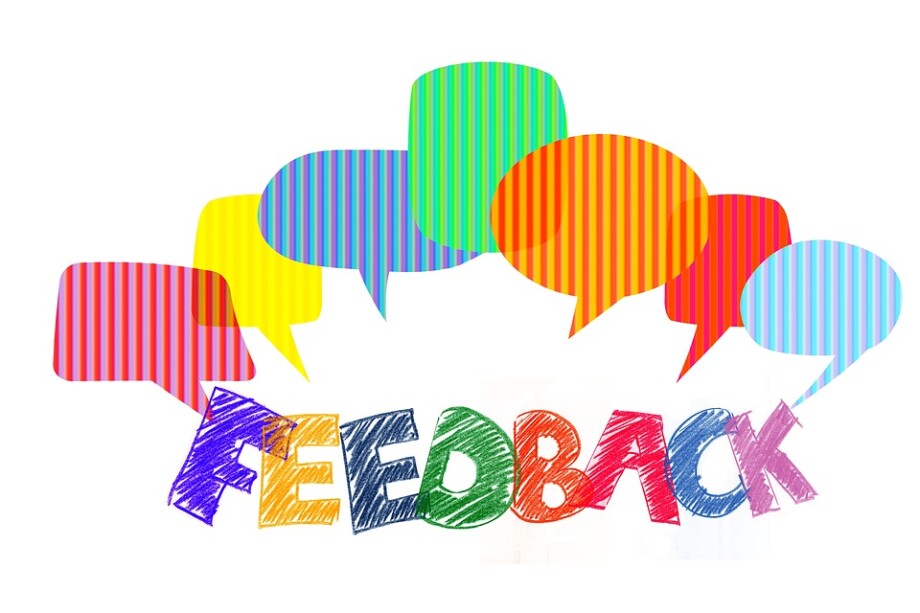Feedback is the information that learners get on their performance. It enables both teachers and learners to draw some conclusions about previous learning, and also to work out a plan for future development.
Why?
Feedback is inseparable from successful learning. It helps students navigate, and assess their own progress. With limited or no feedback, most of teens are very likely to lose their motivation as they cannot see clearly where they are going.

Feedback is of invaluable use for a teacher too. It helps us notice what has probably gone wrong and restructure parts of the course, or just make sure that one more stage is completed successfully.
Which?
There is a number of classifications of feedback types. For instance, it is distinguished between Content feedback and Language feedback.
Feedback on content is about what learners have just done. Here we summarize what a speaking partner said, vote for the best film review, or just go like ‘That was quite a story!’.
Feedback on language focuses on how language has been used. Here teachers take a record of both successful and unsuccessful uses of language to comment on them later or instantly.
Each of the above-mentioned types can be corrective, which focuses a learner’s attention on errors, and non-corrective which is used to praise or encourage.
- Non-corrective feedback
Have you ever noticed how much our teens crave praise? Well, who doesn’t? Receiving an appreciative and encouraging comment, they are more likely to feel respected and heard. You can compliment your teens on a successful story or a wide range of synonyms and impeccable grammar. Just try to be sincere and personal. An abrupt ‘Good’ and ‘Well done’ won’t pay off. - Corrective feedback.
This one is aimed at error-correction, so it’s exploited more often when we deal with feedback on language. Jeremy Harmer is his ‘The Practice of English Language Teaching’ lists some instant correction techniques which you can use with your teens while working on accuracy:
Content feedback can also be delivered in a corrective way. For example, voting for the best review, you might also identify some weak points in its structure and suggest ideas for improvement. A teacher can also expand an incomplete or vague answer to help a student improve their overall performance and be understood.
How?
Feedback can be delivered in oral or written forms, as well as digitally.
- With digital feedback, you can be as detailed as you need. In such a way, you can give a comment on a piece of writing or speaking activity. Regular assessment of general progress also affects learning beneficially. Also, you’ll never hurt teenagers’ self-esteem by referring to their mistakes – and sometimes even successes – in presence of the whole group.Among digital tools for delayed feedback, there are some for recording a voice message delivered as a QR code. Try Vocaroo, or just use WhatsApp or VK if you are in touch with your teens. Emails never get old too.As for the our platform, when you check writing or speaking tasks, you assess these on the following criteria and leave a comment on their overall success.

- Written feedback is great to comment on an essay, letter, article – you name it. Teens tend to get discouraged when they see just a bare percentage and/or a mark. Use correction codes for drawing their attention to the areas to work on. Take some time to list briefly your students’ strong points as well. Give recommendations on useful resources or suggest some strategies for improvement.

- Feedback for spoken work tends to be oral because it can be provided instantly. You can correct your students on the spot if you are doing some accuracy-based task. Also, you can wait till the very end of a fluency-based activity not to distract learners from the communication process. Unless they need specific help in completing the task, of course. Below you’ll find some techniques for correcting mistakes on the spot.
Who?
Previously, we have discussed teacher-centred techniques for giving feedback. However, the whole process might easily be passed on to students sometimes. Here is what can be done with various kinds of activities:
- get your fast finishers to write the answers for the task on the board for the group to compare
- ask students to nominate each other to answer the next question
- spread out the answers as QR codes, invite students for discussion if some problems appear
- let some student have the answer key and play the teacher. This works especially well with stronger ones.
- dealing with writing, ask your teens to share their writings on Padlet or social networks and check each other. Students don’t have to work thoroughly with grammar mistakes, but why don’t they mention a couple of general advantages or disadvantages they’ve spotted?
- use some services like Answer garden to collect anonymous feedback on speaking. It is well worth using after exam-speaking activities. There, there are certain criteria which let your teens assess each other’s performance more objectively.
We have to bear in mind that without some prior demonstration of effective feedback techniques, teens can plunge into criticising each other or confine their comment to mere ‘That’s good, I liked it.’ Or, possibly, just skip it. So, don’t forget to check our next article on how to teach your students to give proper peer feedback.
All in all, that has been just a brief overview of some types of feedback and their possible use. Take a look at Scrivener, Harmer, Thornbury, and other masters of ELT and you’ll find out much more. And for the present, to provide your feedback like a pro:
Be encouraging
Be objective
Be attentive
Be ready to leave it to your teens
Be specific






 Маргарита Аветисян
Маргарита Аветисян 
 Вероника Аветисян
Вероника Аветисян 



Thanks a lot! Very interesting, very useful!
My pleasure 🙂